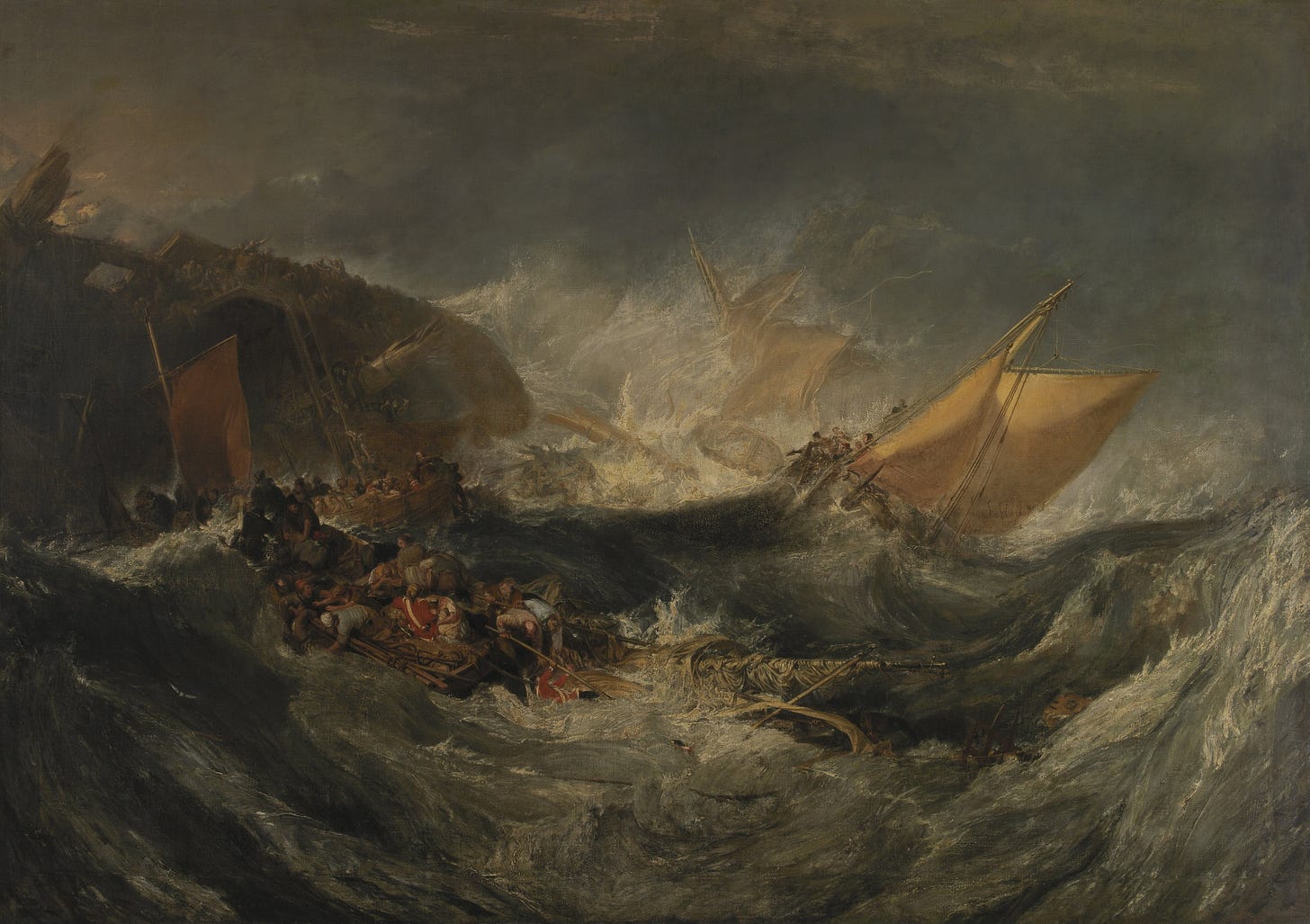A couple of weeks ago, I was pleased to publish a short article at Age of Revolutions, an open-access, peer-reviewed journal. The piece is technically part of their “featured book” series, but really it’s an extended caption for a painting by the artist-in-residence here at War and Peace, JMW Turner:
If you look closely, you’ll see a bunch of soldiers about to drown as their dismasted transport ship (on the left) prepares to capsize. I proposed the painting to the press as a possible cover for The Horrible Peace: it’s got soldiers and sailors in it, just like the book, and it’s suitably horrible. Even though it was painted a few years before the end of the wars, it could easily have been depicting the tragic shipwrecks of returning soldiers in January 1816. On the other hand, its dark colors and general chaos make it hard to unpack, and I’m glad they didn’t choose it in the end.
To learn more about those shipwrecks, I encourage you to click over to read the whole piece at Age of Revolutions, and as always, subscribe, share, and buy the book!
Pranks
You’ll be shocked to learn that the article linked above spends most of its energy on horrible homecomings—I’m nothing if not consistent. But I do have space in the book to talk about happier homecomings. The Scottish sailor Robert Hay ran away to sea when he was fourteen and was gone for eight years. When he finally came back at the end of the Napoleonic Wars, he tried to pull a prank on his poor mother. Instead of rushing home, he booked a room in a local inn near his mother’s house. Then he wrote a letter to his brother, explaining his plan and asking him to pretend not to know who he was. He knocked on his mother’s door and pretended to be someone else delivering a letter from her son, but she recognized him almost immediately. Instead of giving up, though, he doubled down: he continued to pretend to be someone else, and when his brother tried to hold up his end of the practical joke, it only made matters worse. Eventually Hay found himself trying to convince his brother that he was who he said he was, all while his mother had seen right through his ploy.
Hay’s botched prank would make for a terrible TikTok. But many other returning servicemembers do manage to pull off surprise homecomings. There are entire channels dedicated to this genre:
There’s plenty more where that came from. Some of them are quite affecting; others are varying degrees of uncomfortable.
Why would someone pull a prank like this? Here's some unverified speculation:
A prank deflects (undermines?) the emotionally-fraught moment of reunion.
The reveal of the prank produces a predictable emotional response from the family (OMG it was you all along!), lessening the chances that the moment of reunion will go poorly.
Relatedly, the prank keeps control in the hands of the returning servicemember for just a bit longer, before he or she reintegrates into a family situation that has evolved in his or her absence.
Servicemembers have dreamed about homecoming for much of their deployment, so they overthink the moment itself.
I'm sure there are more. Clearly, there’s a dissertation to be written here about what homecoming pranks reveal about gender, emotions, and military identities. Perhaps it’s been written already—I don’t know, but I hope if it has, a reader will tell me.1 The Horrible Peace focuses more on the practicalities of homecomings than on trying to unpack all these issues mainly because such emotions are difficult to pull out of the available sources.
Perhaps I’ll tackle that in the sequel…




